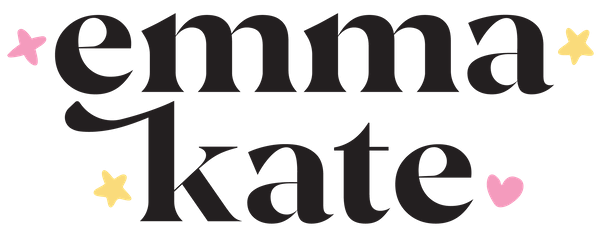Beginner’s guide to choosing a domain

A domain is a fundamental part of a brand’s online profile. Rushing in and picking any old domain won’t do a business any favours. Taking the time to ensure the domain fits the brand to a tee and engages with the target audience is the key to choosing the perfect website domain.
So, how does one choose the perfect domain I hear you ask?
There are a lot of things to consider and chances are finding a domain that ticks all the boxes will be impossible, or at least very expensive. With this in mind, I suggest trying to find a domain name that ticks most of the boxes… That is, fits most of the things I’m going to talk about below.
So let’s dive in. Below I’ve pulled together little nuggets of domain name gold to create a dummies guide for choosing the best available domain for your brand.
1. Choose .com or a country-specific domain
A top-level domain (TLD) is the last part of a domain — they are the letters directly after the dot in the Internet address. Most often, it’s best to go with the most recognised TLD in the world… “.com”.
However, as the Internet is becoming bigger and bigger many people are finding the .com isn’t available for their desired domain name. If that’s the case for you, there are plenty of other great options like .co that will shout your message loud and clear to your target audience online.
Location specific TLDs are great for local business only targeting a specific country: i.e. .com.au, .net.au, .co.nz, .co.uk. These show that the business is local and can also assist with the website’s Google rankings in those specific countries.
If the brand is a bit edgy and you’d like something unique then you can consider some of the newer TLDs like .space, .design, .io, .life, etc.
You can view a full list of the TLDs available separated into categories here.
2. Make your domain short and sweet
Ain’t nobody got time for a super long domain!
Long domains are more difficult to spell and easily forgettable. Make your domain name short, sweet and memorable. Single-word domain names are gold, but they can be hard to find. If you see one suitable to your biz snap it up quick-smart! Otherwise, aim to choose 2 or 3 words that best describe the business or brand message. Keeping the name short will help customers remember the domain and smartphone users search the name while they’re out and about.
3. Say no to (some) abbreviations
Anyone choosing to use abbreviations like 4U, 2U or gr8 in their domain name is setting themselves up for failure. These cutesy ways of abbreviating words don’t help potential customers remember the domain name and if they’re heard and not read the listener could be really confused about how to spell it. So do yourself a favour and avoid using abbreviations or unusual spellings of words that customers or potential leads could easily misspell.
I’m hesitant to say all abbreviations are bad. In some cases they might be necessary. For example, I recently had a client who’s business name is Brisbane Height Safety Certifications. The logical domain name for this business would have been brisbaneheightsafetycertifications.com.au, but man that’s a mouthful! As bhsc.com.au was already taken we decided on bhscertifications.com.au for their domain name. It’s not ideal, however, this made it a lot easier to say over the phone or on radio ads, etc. It also made it significantly shorter in length meaning less possibility of being misspelt as well as easier to fit on flyers, business cards, etc.
4. Sound like a brand
Your goal is for potential customers to look at the domain name and understand what the business is offering or what the website is all about. Consider the domain name as a label for your client’s brand and ensure you’re stepping out with a professional digital footprint. If the brand name is appropriate and available then go with that. If not, use another word combination that reflects and compliments the brand or offering.
5. Make it memorable
A good domain name has to be easy for a customer to recall. Domain names that are easy to remember are usually short, represent the brand, and avoid hyphens, numbers or words that are easily misspelled.
6. Avoid awkward & ambiguous domain names
When you are choosing a domain name ensure the words look legible together and are not embarrassing to the business. The last thing you want is an embarrassing domain name like Pen Island: “www.penisland.net” or Speed of Art – “www.speedofart.com”. I don’t think they thought those ones through ;-). To prevent future embarrassment, before you register a domain name make sure you review your final selection and make sure it’s legible and unambiguous.
7. Do you/your client like saying it?
Your domain is something you’ll probably say out loud as much as your business name, so it’s important that you like it. Say it out loud 5 times. Do you like the sound of it? Is it easy for you to say? Does it sound punchy?
8. Ask your friends
The domain you’ve chosen might sound great to you, but hey… the guys at Pen Island probably thought the same thing. It’s better to be safe than sorry. So before buying a domain name I recommend running it past some friends or colleagues. Here are some questions to ask them:
1. Say your chosen domain/s to them out loud and ask them to write it down. Can they spell it correctly and easily?
2. Does the domain spell anything strange? i.e. therapist.com
3. Is it easy to remember?
The Wrap Up
These are the key things I consider when choosing a domain for myself or my clients:
1. Choose .com if available or a country-specific domain extension if it’s for a local business
2. Make your domain short and sweet and ensure it isn’t easily misspelt
3. Say no to cutesy abbreviations in your domain
4. Ensure it sounds like and represents the brand and isn’t misleading
5. Make it memorable
6. Avoid awkward & ambiguous domain names
7. Do you like saying it?
8. How do you friends respond to it?
About the author
Hi! I'm Emma. I’m a graphic designer turned web designer on a mission to teach others how to build beautiful & professional websites with WordPress. Through mentoring and my online courses I teach other graphic designers and entrepreneurs how to build their own websites using my 9-step process. In my spare time I love writing about my freelance life, creating pretty things and hanging out with my fiancé & fur-babies. Find me on Insta & in my Facebook Group
